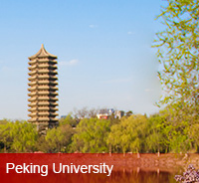Prof. Li Lixing: Go Beyond Low-Assimilation Urbanization
Mar 04-2024
The MBA curriculum at NSD contains a module on the Chinese economy, in which students receive solid academic training by learning to apply economic theories to analyze the development of the Chinese economy. In a recent edition of MBA Lectern, a hallmark event of BiMBA Business School, Prof. Li Lixing demonstrated such applications by dissecting China’s urbanization. He is PKU Bo Ya Young Scholar, NSD Professor of Economics, and Director of Peking University China Center for Public Finance.
He first introduced urbanization through its three major facets: space, population, and traffic, and then discussed the metrics to quantify urbanization level. Who counts as an urban resident is not as straightforward as it seems, given the large quantity of migrant workers who dwell in cities but do not obtain Hukou (Residence Permit). Population density used to be a core gauge for separating urban and rural areas. It has been joined by new criteria such as infrastructure linkages, overall population size, and ratio of non-farming population. Administratively, the whole of Beijing counts as one city; statistically, it makes sense to differentiate its urban areas from administrative villages, said Prof. Li.
In the last two decades, China’s urbanization drive has displayed two salient features. One is that land-wise urbanization has grown faster than population-wise urbanization. Prof. Li said that the chief cause is the ‘land fiscal policy’: local governments pump up fiscal revenues by making rural land available for urban usages like industry, commerce, and transportation. Such land sale accounted for up to half of some local governments’ fiscal revenues. The other conspicuous feature is the relatively low urbanization ratio insofar as households with Hukou are concerned. Most migrant workers who live in cities have not been granted Hukou. Local governments balk at doing so perhaps due to the costs involved. According to calculations in 2010, accepting a migrant worker as a Hukou resident would entail 100,000-200,000 yuan of fiscal outlay to cover public services such as child education, social security, healthcare, and even affordable housing. According to 2020 statistics, China’s Hukou-based urbanization amounted to merely 45%, 18% lower than the one counting all those living in cities. Without access to public services, many live in cities but retain rural lifestyle, namely high savings rate and low consumption. Such low assimilation counts for low-degree urbanization, said Prof. Li.
To enhance urbanization level, some corrective measures should be taken, said Prof. Li. More safeguards and public services should be provided to those without Hukou, so they feel more confident to spend. Prof. Li said that rather than fixating on urbanization ratio, more attention should be paid to urban development potential and the number of people in low-degree urbanization. He recommended several books to the audience to help them understand the economic patterns behind urban agglomerations and the relationships between urbanization and incomes. He said that China’s current urbanization level is comparable to that of the US in around 1950, and of Japan in around 1965. The experiences of the two countries showed that after reaching an urbanization ratio of 60%, cities still have huge room to grow.







